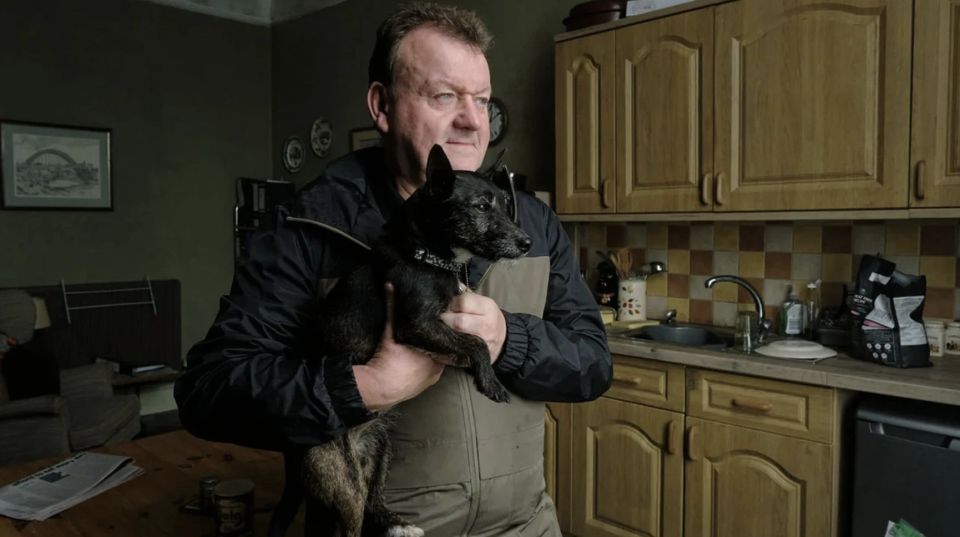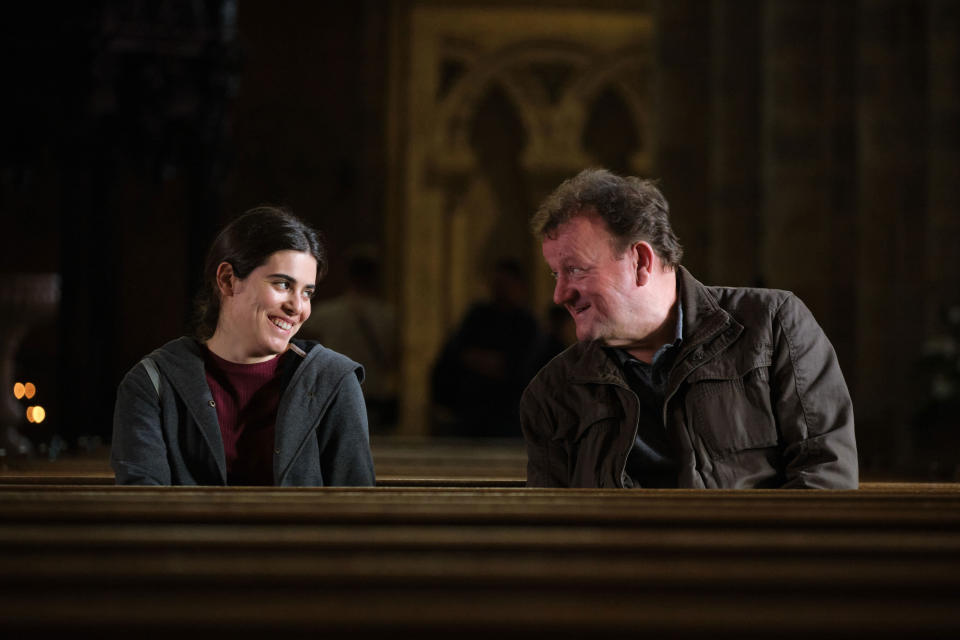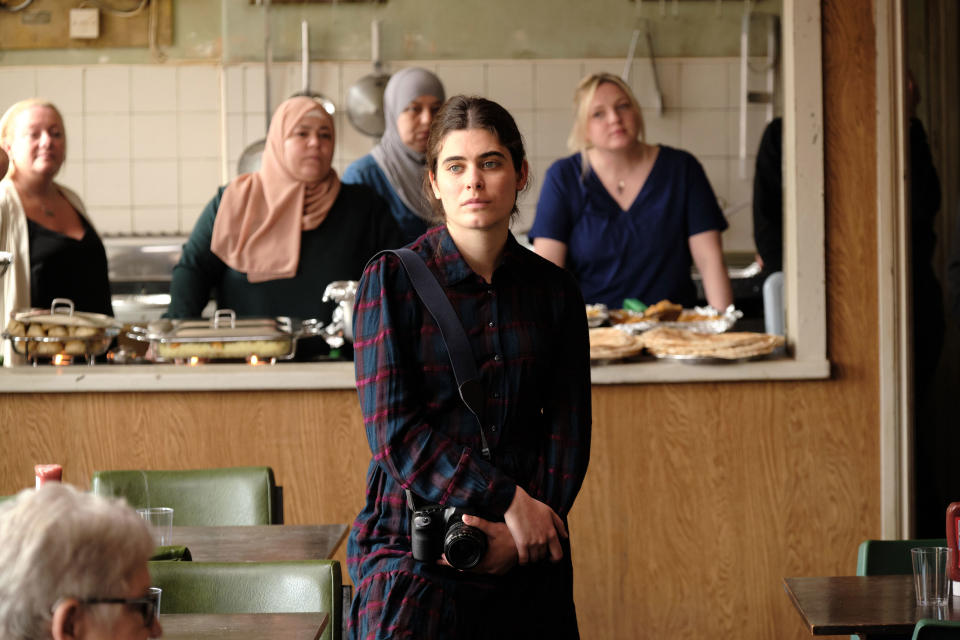Ken Loach Knows How to Make You Cry

If you’re lucky enough to live in New York, Film Forum is mounting a 20-film Ken Loach retrospective on April 19 after his latest — and quite possibly last — film, Cannes 2023 entry “The Old Oak” starts rolling out on April 5. The British director carries the distinction of being one of nine filmmakers (among them Francis Ford Coppola and Ruben ?stlund) to win the Palme d’Or twice: for the Irish history “The Wind That Shakes the Barley” (2006), starring Cillian Murphy, and healthcare drama “I, Daniel Blake” (2016).
Both times, the Competition juries were powerless to resist the films’ emotional pull.
More from IndieWire
And resistance is futile. That’s because Loach knows how to move us. His movies hit a nerve because they dig into believable characters inspired by real people and informed by current events.
Loach and his long-time screenwriter Paul Laverty do not rip stories out of the headlines so much as they find real situations that cry out for dramatization. “The Old Oak” could be their last effort. It marks the end of an unofficial Northeast England trilogy, including “I , Daniel Blake” and “Sorry We Missed You.”
“Yes, it turned into a trilogy; it wasn’t planned that way,” said Loach on Zoom. “But we did one, ‘I, Daniel Blake,’ about the social security payments that people are entitled to, and the bureaucratic obstacles that are put in their way, and then the consequences of the gig economy, the insecurity at work, not knowing how much you’re going to work from one week to another. You can be sacked at a moment’s notice. You can plan your lives, you can work 12 to 14 hours a day to get a decent wage. And the consequences for family life.”
At age 87, Loach doesn’t think he can make another movie. It’s not that he doesn’t want to. Directing is physically demanding. “It will be difficult to get around the course again,” he said. “Because I’m not one of those who directs from behind a monitor. You’re on your feet, 12 hours a day. You’ve got to know everybody on the crew, know their names. You’ve got to stay in touch with everybody, got to keep everyone on their game.”
He continued, “And you have to do the film: the right spot lens, the sound right, everybody happy working. And find the right rhythm for the people in front [of the camera] so they know what they’re doing and it doesn’t get corny, doesn’t get overdone. Everyone’s like kettles on the hub, just simmering and coming to the boil. Keeping up that level of emotional energy is quite a lot. You’ve got to run some of the time because you’ve got to generate energy as well. And if you sit down, you generate nothing. So you’ve got to chase it.”

Loach and Laverty have always hunted for situations of conflict to feed their dramas. For “The Old Oak,” they centered on County Durham, once home to three thriving industries: coal mines, shipbuilding, and steel.
“They’re all closed, one after the other, really quickly,” said Loach. “Nothing put in their places and people are desperate, desperate. … They shut the mines quickly over a period of five or six years, left the communities in the dirt, particularly in the Northeast [towns] just centered around the pit. Those infrastructures shut down, schools and churches closed, community activities ended. People were just abandoned. You have two traditions, the old mining tradition of solidarity, and opposed to that is the anger, the bitterness. And that can turn into blame. Who do we find to scapegoat? The Far Right came along, holding meetings and blaming the immigrants. So that becomes a fertile ground for racism.”
Set in 2016, “The Old Oak” started with a story Laverty heard about a group of refugees from the Syrian war “who arrived in a village because things were dead cheap,” said Loach. “Houses are half the price of a poor second-hand car. The Syrian refugees [are] just wearing their clothes with a suitcase or two. And people from the village had heard they were coming, gathered round and were quite hostile, and quite racist.”
Laverty told Loach, “That’s the story, because that brings out those who say ‘we have to make them welcome,’ and those who say, ‘we have nothing, why should we have to share what little we have?’ But some fall for the idea that it’s the fault of the immigrants.”

Laverty and Loach talk on the phone, meet when they can, and eventually finalize Laverty’s script. “He’s pulling it down, but we talk about the essence of it,” said Loach. “Paul will do a first draft. And then we try and destroy it. We knock it backwards and forwards and shape it until it tears a little bit. But it’s a joyous experience. We’ve been great friends and comrades.”
They always leave a nugget of hope, a glimpse of human kindness. That is where, in these fraught times, the well of emotion lies. “The director’s job is to bring that to life,” said Loach, “to make it real and find the right people that the audience will care for. And look as if they’re really embedded in that community. And you can see it in the pores of their skin.”
The central character is fireman-turned-bartender TJ Ballantyne (Dave Turner), the owner of the town’s last remaining bar, The Old Oak, which is the crucible for all these conversations. “The pub is the heart of the village,” said Loach. “It’s where people go, where they talk, where they share issues.”

His back room is full of history, too, with photos on the walls of the glory days of the miner strikes. A group of angry racists wants to hold a meeting there, but TJ won’t have it. But he does host, to their chagrin, a series of community meals for the town and the immigrants, so they can get to know one another.
TJ isn’t like the angry racists. “He began as a miner, he did community work, he ran the local football team,” said Loach. “He knows what it is to be part of the of the community. A lot of people, probably the majority, just give up; they drop away. That’s when the far right come in with racist propaganda. And the Labour Party, like the Democrats, the whole clique at the top, the neoliberals, have nothing to do with Labor, they barely speak to trade unions, they just take their money. They speak to business all the time. So we don’t have a party of the Left at all.”
[Editor’s note: Spoilers for “The Old Oak” follow.]
Despite the well of sadness in “The Old Oak,” which is populated by hurt, unhappy, disappointed people, Laverty and Loach’s coup de grace is a moving, hopeful finale. The Syrian family finds out that the father has died in prison. Soon, the entire village knows, and something extraordinary happens. The one-time coal mining community performs for the immigrants the same ritual they would do for a man lost in the mines.
“It’s a human response,” said Loach. “They got to know them. These are people that they know, and they know what it means to them. It’s identifying each other as equals: your pain is my pain.”

The filmmakers shot the denouement on the last day of the shoot, with little notice of what it was going to be. “It has to come as a shock,” said Loach. “And the shock brings the emotional energy. And they can play off that.”
Shooting the interior took well into the afternoon. “We didn’t begin to shoot the outside until five o’clock,” said Loach. “We had to finish, and it rained in the middle. Nobody knew who had been photographed, we shot it like a documentary. We had a gathering before we went into the street. [I said], ‘The film hangs on this, on the truth of what you do. Be true to the moment and you can’t do anything wrong.’ And so they went into the streets and we choreographed the bits, people were spaced out.”
The actors and extras brought flowers gathered from their own gardens, and other offerings, to form a makeshift shrine. When they gave presents and spoke kindly to the actress playing the Syrian mother who had lost her husband, she wept. “That’s what you hope for,” said Loach. “But the one thing you can’t do is say, ‘We want you to weep.’ You can’t say that, because that’s a guarantee that they can’t.”
That genuine emotion fuels the final scene.
Going forward, Loach is trying to resolve some health issues. “The bad things have been ruled out,” he said. “I’ll take it week by week.” He’s on the promo circuit and invited to festivals and enjoying the plaudits that come with a long, productive, creative life. “I love political stuff. Every day is full, if I want it to be. So there’s no shortage of mischief to get up to. It would be nice to listen to the crickets and not feel guilty.”
A Zeitgeist/Kino Lorber release, “The Old Oak” opens Friday, April 5 at Film Forum (New York); Friday, April 12 at Laemmle Royal (Los Angeles); and will expand nationally in select markets.
Best of IndieWire
Sign up for Indiewire's Newsletter. For the latest news, follow us on Facebook, Twitter, and Instagram.